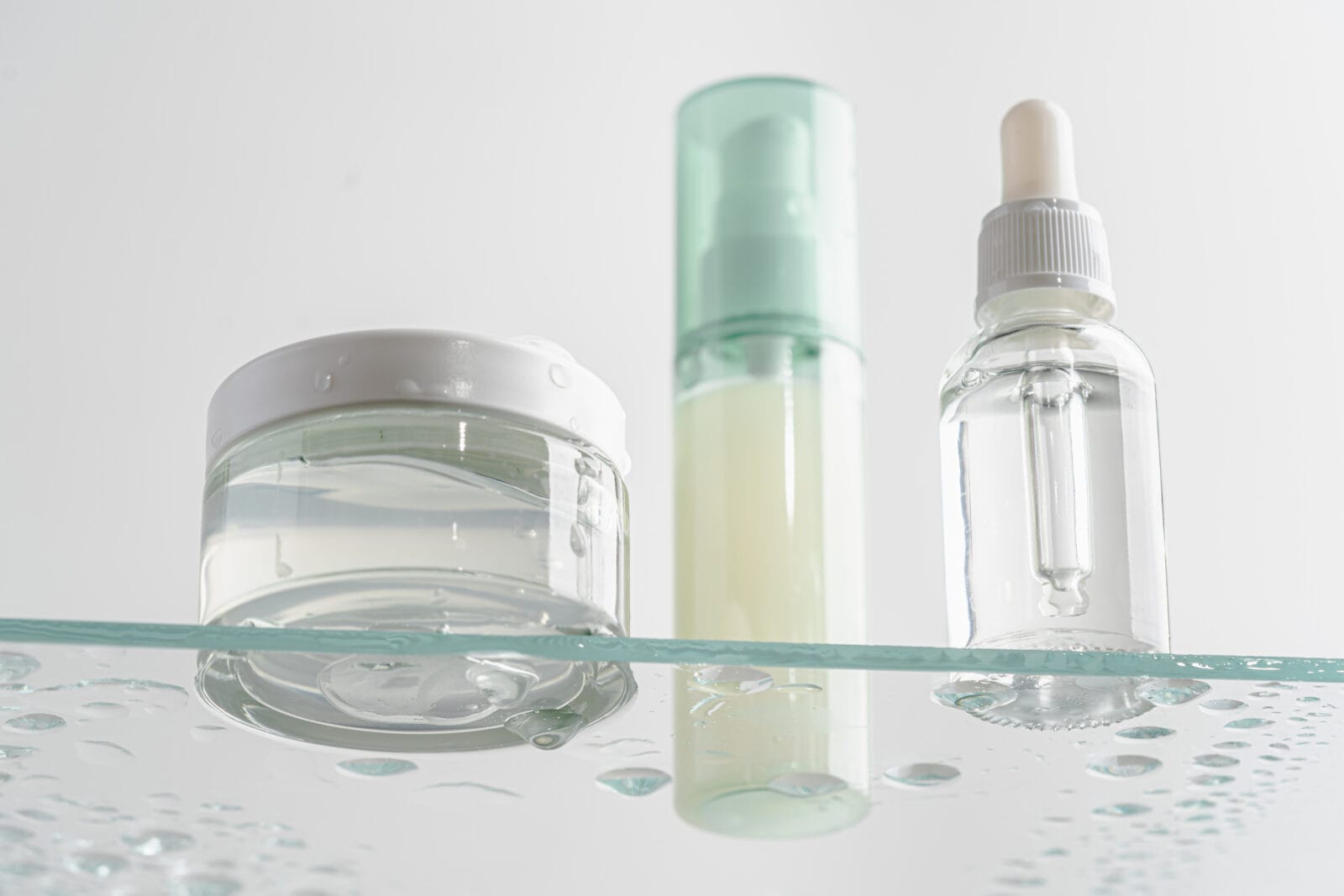Skincare
Hydrating and Moisturizing Your Skin the Right Way
Taking care of your skin means more than just applying products daily. A well-thought-out routine can make the difference between a complexion that simply survives and one that truly thrives. Two crucial elements in any skincare regimen are hydration and moisturization. Though these terms are often used interchangeably, they serve distinct purposes. Understanding these differences can help you choose the right products and methods to achieve the healthiest skin possible.
The Difference Between Hydration and Moisturization
When we talk about skin hydration, we’re referring to the water content within your skin cells. Hydration keeps your skin plump, bouncy, and radiant. Dehydrated skin, on the other hand, can appear dull, flaky, and more prone to showing fine lines. Hydration is essential for all skin types, whether your skin is oily, dry, or somewhere in between. This is because every skin type requires water to maintain its natural barrier function, which keeps environmental aggressors at bay.
Moisturization, however, focuses on sealing that water into the skin to prevent it from evaporating. Moisturizers often contain oils, creams, and occlusives that form a protective barrier on the skin’s surface. This barrier helps to lock in the hydration and keep the skin soft and supple. While hydration adds water, moisturization ensures that water stays where it’s needed. A well-moisturized face will not only feel smoother but also better protected against external irritants.
Finding the Right Balance for Your Skin Type
The key to healthy, glowing skin is finding the right balance between hydration and moisturization. This balance can vary depending on your skin type and the environment in which you live. For instance, someone with oily skin may need a light, water-based hydrator to maintain moisture levels without adding extra oil. In contrast, those with dry skin may benefit from a rich, emollient moisturizer that locks in hydration and provides a continuous source of nourishment throughout the day.
Your skin type isn’t static; it can change due to factors like weather, hormones, and lifestyle. Therefore, being attentive to your skin’s needs and adjusting your routine accordingly is crucial. For example, during winter, even oily skin might require a more robust moisturizer due to the harsh, drying air. On the other hand, in a humid climate, a lighter hydrating serum might be all you need to keep your skin balanced and comfortable.
Choosing the Right Products
When selecting skincare products, it’s important to choose those that align with your skin’s unique needs. Hydrating products typically contain ingredients like hyaluronic acid, glycerin, and aloe vera, which attract water to the skin and help it retain moisture. Hyaluronic acid is especially powerful; it can hold up to 1,000 times its weight in water, making it a popular choice in serums and hydrating masks.
Moisturizers, on the other hand, contain occlusive and emollient ingredients that seal in moisture. Common ingredients in moisturizers include shea butter, squalane, and ceramides. These elements work together to form a barrier on the skin’s surface, preventing moisture loss and providing long-lasting comfort. For a balanced routine, consider using a hydrating serum first, followed by a moisturizer that suits your skin type.
Layering Products for Maximum Efficacy
To get the most out of your skincare routine, the order in which you apply your products matters. Start with the thinnest, most water-based products and work your way up to the thicker, more emollient ones. This approach ensures that each product penetrates the skin effectively and performs its intended function without interference.
For instance, after cleansing your face, a hydrating serum should be applied first. This serum will absorb quickly, providing the water content your skin needs. Next, apply a moisturizer to seal in that hydration. If you’re using additional products like facial oils or sunscreen, these should be the last steps in your routine, as they provide a protective layer that keeps everything else in place.
Incorporating Hydration and Moisturization into Your Routine
Consistency is key when it comes to skincare. Incorporating hydration and moisturization into your daily routine is a habit that pays off over time. In the morning, start with a gentle cleanser that won’t strip your skin of its natural oils. Follow this with a hydrating serum and a moisturizer that suits your skin type. Don’t forget sunscreen, which is essential for protecting your skin from UV damage that can lead to premature aging and dehydration.
In the evening, after cleansing, apply your hydrating products first to replenish any moisture lost during the day. Finish with a nourishing moisturizer to lock in that hydration overnight. This routine not only keeps your skin hydrated but also ensures it stays smooth and resilient, even in harsh conditions.
Understanding Your Skin’s Needs
Your skin’s needs can change from day to day, influenced by factors such as stress, diet, and the environment. Paying attention to these changes and adjusting your skincare routine accordingly can make a big difference. For example, after a day in the sun, your skin may require extra hydration to counteract the drying effects of UV exposure. Conversely, during a particularly humid day, you might find that a lighter moisturizer is sufficient.
Additionally, your skin’s hydration levels can be affected by internal factors like diet and water intake. Drinking plenty of water throughout the day helps maintain hydration from the inside out. Foods rich in omega-3 fatty acids, such as salmon and walnuts, can also support your skin’s barrier function, helping it to retain moisture more effectively.
The Importance of Ingredients
Understanding the ingredients in your skincare products can help you make informed choices that benefit your skin. Look for products that contain ingredients known for their hydrating and moisturizing properties. For instance, glycerin is a humectant that draws water from the environment into your skin. Squalane, a derivative of olive oil, is a lightweight oil that mimics your skin’s natural sebum, providing moisture without clogging pores.
When choosing a moisturizer, it’s important to avoid products with alcohol or other harsh ingredients that can dry out the skin. Instead, opt for formulas that are fragrance-free and designed for sensitive skin, especially if you are prone to irritation. This approach ensures that your skin gets the hydration and moisture it needs without the risk of adverse reactions.
The Role of Climate in Skincare
The environment plays a significant role in how your skin behaves and what it needs. In dry climates, the lack of humidity can strip moisture from your skin, making hydration and moisturization even more critical. On the other hand, in humid climates, your skin might retain more moisture, requiring lighter products to avoid a greasy feeling.
Adapting your skincare routine to the climate can help you maintain balanced, healthy skin year-round. During the colder months, opt for richer, cream-based moisturizers that provide extra protection against the elements. In warmer weather, switch to lighter, gel-based products that hydrate without weighing your skin down. This flexibility ensures that your skin remains comfortable and hydrated, no matter the weather.
The Science Behind Hydration and Moisturization
Science plays a crucial role in understanding how hydration and moisturization work. The skin’s outermost layer, the stratum corneum, is composed of dead skin cells and lipids that form a barrier to protect the underlying layers. When this barrier is compromised, either by environmental factors or improper skincare, moisture can escape, leading to dehydration.

Studies have shown that maintaining an intact barrier is essential for healthy skin. Using products that support this barrier, such as those containing ceramides and fatty acids, can help prevent transepidermal water loss (TEWL). TEWL is the process by which water evaporates from the skin’s surface, leading to dryness and irritation. By keeping your skin hydrated and well-moisturized, you can reduce TEWL and maintain a healthy, glowing complexion.
The Importance of Consistency
Consistency is the cornerstone of any effective skincare routine. While it’s tempting to try the latest trends or switch products frequently, sticking to a routine that works for your skin type is the best way to achieve long-lasting results. Regular use of hydrating and moisturizing products will help your skin build and maintain a strong barrier, keeping it protected and resilient.
It’s also important to remember that results take time. While you might notice an immediate improvement in your skin’s texture and appearance, the full benefits of a consistent skincare routine can take weeks or even months to become apparent. Patience, combined with the right products, is the key to achieving and maintaining healthy, hydrated skin.
Real-Life Benefits and Statistics
The benefits of proper hydration and moisturization extend beyond just appearance. Hydrated skin is better able to repair itself, heal from damage, and ward off irritants. One study found that using a moisturizer with ceramides improved skin barrier function by 34% after just four weeks. This statistic highlights the importance of choosing products that support your skin’s natural defenses.
In addition to improving your skin’s resilience, hydration and moisturization can also help with issues like acne and sensitivity. By maintaining a balanced routine, you can reduce the likelihood of breakouts and soothe irritation, leading to clearer, calmer skin over time.
Conclusion
Caring for your skin is an ongoing process that requires attention, the right products, and consistency. By understanding the roles of hydration and moisturization, and how to apply them effectively, you can achieve healthier, more radiant skin. Remember, the key is to listen to your skin’s needs and adapt your routine to meet them. With the right approach, you can enjoy the benefits of well-hydrated, well-moisturized skin every day.





